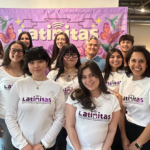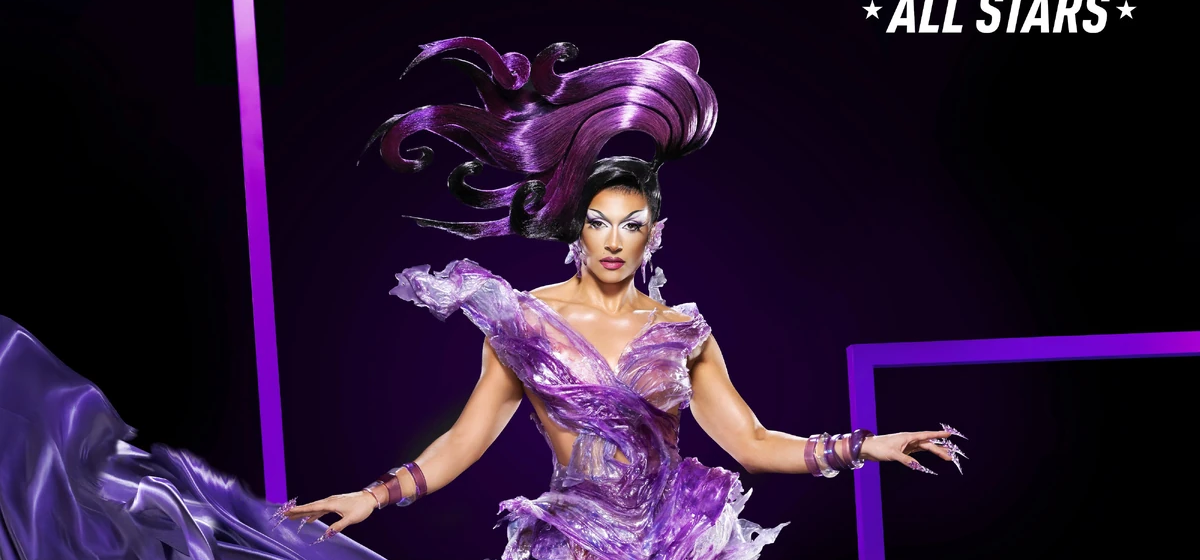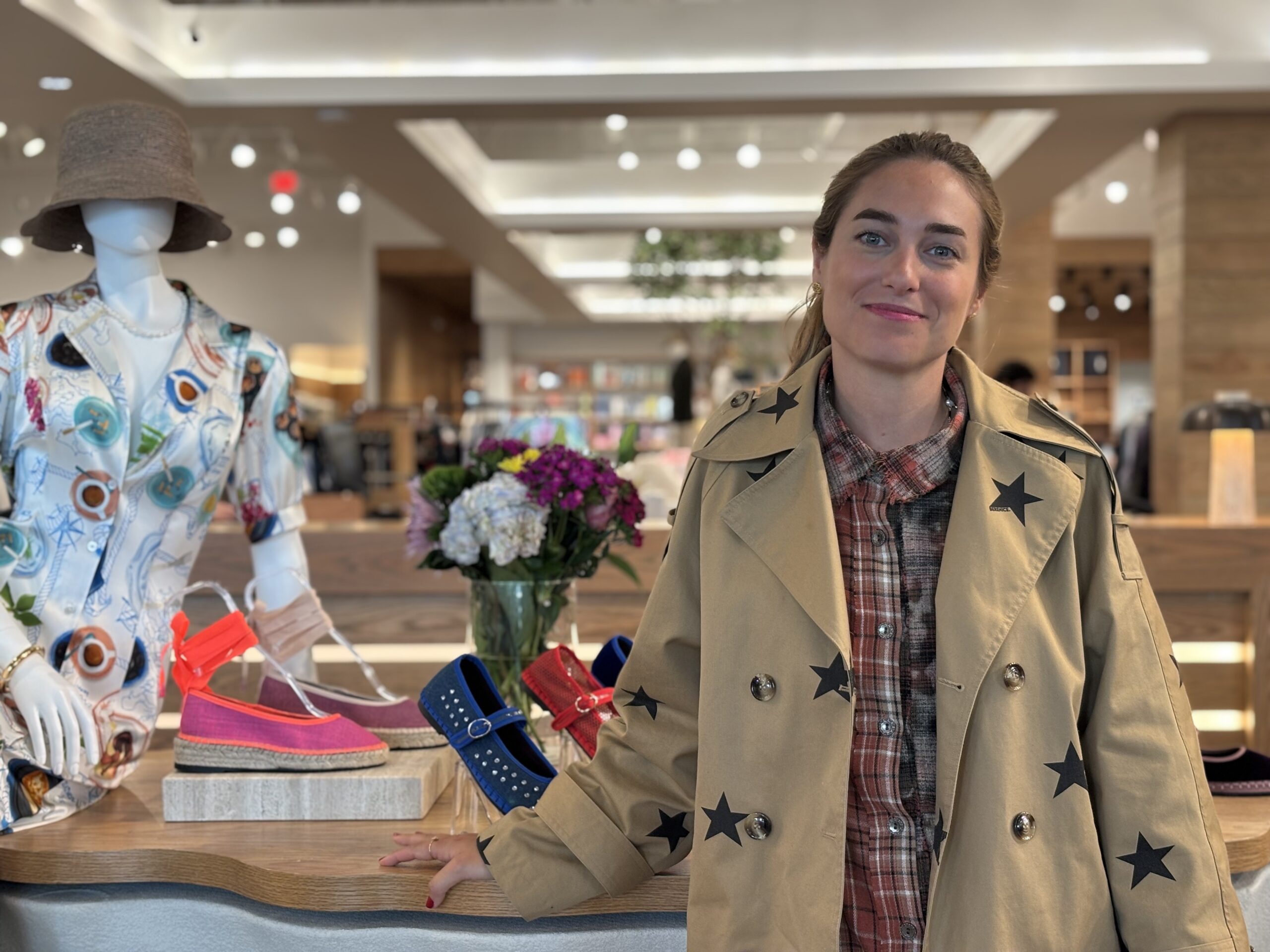Hosted by Elisa Garcia
Editor’s Note: This is a transcription of Latinitas Magazine’s SoundCloud podcast “20 Questions With,” where we invite bold and creative individuals to discuss their experiences and background. Listen along by clicking the link!
Hola Chicas! Welcome to 20 Questions With, a podcast in conjunction with Latinitas Magazine. Latinitas Magazine is a strong voice for Latina and POC Youth, which is why the hosts of 20 Questions With are all young Latinas who are looking to gain experience in innovative and creative fields just like you!
In each episode, you’ll hear from striking individuals who are inspiring today’s youth with their passion, motivation, and grit.
Today, join me, Elisa Garcia, and Volunteer Writer Dana Garibaldi while we sit down and ask 20 Questions With producers Estefania Bonilla Hernandez and Craig Whitney of “The Red Note” Podcast. The Red Note podcast is a 10 episode podcast series hosted by investigative journalist Lydia Cacho. The show follows the stories behind the femicides in Ciudad Juarez, Mexico. The show is the first fully bilingual podcast, with complete English and Spanish episodes (under the title “La Nota Roja”).
Both “The Red Note” and “La Nota Roja” were written and directed by Craig Whitney, with lead producer Estefania Bonilla Hernandez.
We had a fantastic time talking to Estefania and Craig, and they walked us through valuable information about the femicides. With that said, this episode will be divided into two parts for our listeners.
DANA: Thanks for joining us on this episode of 20 Questions With. I’m Dana, and I’m here with my co-host at Elisa. And we’re here with today’s guests, Estefania and Craig, who are part of “The Red Note” podcast, which investigates the numerous femicides in Ciudad Juarez, Mexico.
ELISA: Hi, everyone. And I’m going to be kicking off with the first half of the questions. So I always like to know —can each of you walk us through your career background and how each of you came to be part of “The Red Note” team.
CRAIG: I worked for about three years as a college journalist at the University of Connecticut and a couple of years at the University of Texas at Austin. After graduation, I made a couple of short films, one of which was called “The Garden in the Wilderness,” which won an award from the Houston Film Commission as one of the year’s best Texas-made short films. And so, after receiving that award, I started wanting to do my first feature film. I decided I wanted to make a film about the femicides in Ciudad Juarez. I started working with Estefania on that about three years ago. And as we were looking for financing for the film, we had the opportunity to make the podcast. So that’s how we got to this point.
ESTEFANIA: I have an ethnohistory degree from the National School of Anthropology and History here in Mexico City. All these social issues and themes have always been something that I’ve been drawn to. I also studied ethnohistory, with the means of going into filmmaking. So I began doing a lot of work as a production coordinator for some big movies like “Transformers: The Last Knight” and other MGM Studios films. Also, for Mexican productions where I was working with production houses.
We met with Craig through finding common ground that we have that right now. It’s the editor. It’s the editor that we want to be for the movie. And that’s how we began to work together three years ago. And in all that journey, we got to get to do the podcast.
ELISA: That’s amazing. And I believe you mentioned that you had prior knowledge about the femicides going on. So what was it that inspired you and drew you to the story, and how that led to making “The Red Note?”
CRAIG: Well, what inspired me initially was a song by an El Paso rock group called “At The Drive-In,” about the story of a disappeared woman. I heard that for the first time in 2002 and just thought it was a wonderful piece of literature about an important story. I rememb
er giving some thought, like, ‘Maybe I would write a poem about it,’ but I never did. About 10 years later, when I was thinking about what I would do with my first feature film, I read “2666,” the novel by Roberto Bolaño, which is also about femicides.
When you’re thinking about what you want to make a movie about, there are different criteria. I mean, it has to be a dramatic story, because you want to make an interesting movie. For me, it also ties in with so many complicated social forces that gave rise to the femicides appealed to me on a lot of different levels as a potential story. Over the next several years, I read dozens of books and many hundreds of articles, and did interviews, and just tried to learn a lot about it for the script. So when we were presented with the opportunity to do the podcast about a year ago, I had already done a lot of research about it. I don’t think it would have been possible to get it done in the time that they wanted to get it done if there hadn’t been a five or six-year lead from all the work that Estefania and I did going to Juarez and researching. Those are the things that inspired me.
ESTEFANIA: Well, in my case, it wasn’t a thing to find inspiration because I’m on the production side. My responsibility is always to take the director and protect the creativity and vision of a story. In my particular position as a producer, I go into being the creative part —being somebody who can verify the information.
So there were many things that Craig was reading during his research from people from the U.S., and researchers from the U.S. that sometimes got some things wrong, because they didn’t have this feeling about living in a culture —some meanings, symbols, and attitudes were wrong. Obviously, that’s something that you only know when you live in the place, and you live between these people.
So in my case, it was a job to help Craig craft the story in a more specific and accurate way — how to bring out the story he wanted to tell. Because of the nature of the subject, I know that Mexico is getting a lot of attention. Two years ago, for some reason, this thing kind of exploded. And all these feminist movements that already in Mexico have been gaining a lot of attention. And they have been rolling from inside out in various ways. I was that vehicle that Craig could use to navigate through that kind of subtle circumstances or elements that you need to have to understand the complexity of this story.

ELISA: Thank you guys for sharing that. My next question is, what’s the story behind “The Red Note” title? Who came up with it? How did that idea come to be?
CRAIG: When I wrote the first version of it, I felt it wasn’t the right title for the film as time went on. So I started keeping a list of other titles and things I read in books. I think, on the one hand, it sounds good. It sounds like the name of a movie, which seems kind of dumb, but it’s also important because it’s a commercial product. One of the things we’ve discussed in the podcast is the systemic nature of gender violence in Juarez and other parts of Mexico and Latin America. Femicides happen because of an interplay between drug trafficking, weapons trafficking, globalization, machismo, corruption in the government, infrastructure problems in Ciudad Juarez.
So it felt like a title that alluded to the systemic nature of the problem rather than being ‘Oh, there’s a serial killer loose in Ciudad Juarez, and we have to track him down.’ I feel like a lot of times, these horrific acts of violence in Mexico or other parts of the world are exploited for entertainment value. It’s disappointing how these horrific acts of violence are used to sell newspapers and are not examined with the kind of depth that they need to be.
In yellow journalist newspapers in Mexico, there’s always a dead body on the front, a soccer player on the back, and if you open up the middle, a lady in a bikini. I mean, there’s usually not much more analysis of this body that is photographed on the street other than the kind of shock value of these horrific acts of violence. And I felt like what we wanted to do in the film was to examine the arts of this person’s life and that there’s more to this person’s life than being shot five times in the street. They have a family, and they have friends and jobs, and they are complex social forces that were behind their murder. To only investigate it with the complexity of a bloody photo and an exploitative headline —we talked a lot amongst ourselves about how the victims become re-victimized after their deaths. It was a way to acknowledge that the film’s going to be a much more sensitive and in-depth look at some of these events taking place along the border than what is often presented in the media.
ESTEFANIA: Well, Craig was the one who came up with the title of “The Red Note.” Here in Mexico, it was controversial between the people who always knew the project because the red note always has this negative connotation. As Craig says, the media has exploitative images, people being shot, people being murdered, or people dying in very weird ways. And it’s more in this sense of selling a lot of newspapers and selling this horrid imaginary around death. Many people here in Mexico read the title, or even the families when we were telling them the title, they asked, ‘Like, why?’ The title always has this kind of impact here in Latin America.
It’s kind of like you are reimagining that concept into a new thing. It’s like a contra position. I mean, we’re doing completely the opposite, or at least we try to do the opposite entirely. So you always have a contra position between these horrid, imaginary and graphics around these subjects. We wanted to talk about it as a more human, social, serious, and complex story and all the context that it’s around. And even with that explanation and everything, many people still hate the title. I can say that now, but some people also understand the nuances and ideas behind the story. Almost like you reclaim something that has a meaning, but you reclaim that to reimagine it in another way.
So I do like that kind of exercise. Everybody has been reacting to it positively more than in a negative way. Maybe because now it’s gaining a lot of ears. And it’s getting a lot of attention. It’s a title that everybody concentrates and fixates on. It’s something that captures your attention. And when they go into it, and they listen, it’s like, ‘Oh, OK, that’s been interesting.’ That’s one of the exciting things about this project —we will see how this experiment goes. But I think that was precisely the intention that everybody reacts to, right? I believe as you hear about a famine going on in another part of the world, or a genocide, for a lot of people, their eyes glaze over, and they don’t connect to it with the diligence and care that stories like that require. I think it’s good to get a reaction from people because people have heard this story before. In many cases, getting them to look at it with fresh eyes is essential. That title is one way to get an apathetic audience member to sit up and pay attention.
ELISA: Thank you, guys, for sharing. I wanted to know what the process looks like putting together an episode and publishing it? This past year we had a pandemic, and everything was virtual. So what did that look like for you guys?
CRAIG: Well, we signed the agreement to do the podcast in November of 2019. I started working on the scripts right away. I had to write all the scripts in 60 days. So that was a lot of work. But I finished the first drafts before we went to Juarez. And then we went there with our production team last February and spent about three weeks there doing interviews with families of the victims and journalists and investigators and government members. We tried to get as broad a spectrum of perspectives on these murders as we possibly could. And then, after those three weeks, we came back to Mexico City and the pandemic started. So as we were heading into the post-production process, we were also dealing with adjusting to the new pandemic reality.
I had to finish the scripts. So I did another 30 days of writing after we got back. Estefania and the translators were transcribing all the interviews while I was working on the scripts to incorporate those into the revised versions of the scripts. And then I think in about April, we went into the studio with Lydia. Lydia was reading all these scripts and sending us notes giving us a lot of stories. She was a reporter in the 90s covering the femicides, so she had all these anecdotes about ‘Oh, yeah, I talked to that guy in 1998. And here’s what he told me.’ Those were fantastic because they helped put her stamp on the material. We tried to carve out as much space for her to put stories in and give me notes and change things. There was a lot of revision we did with her, and we went into the studio for about a week and a half in April, which was arduous because we had to do them all over Zoom calls.
I was here in Mexico City listening to the recording sessions over Zoom. I was doing 10-hour long Zoom calls every day for about a week and a half, which was tiring. We finished those and then started working with our editor, on putting together the episode’s edits, then simultaneously working with our composer Michael Ramos in Austin to put the music together. We did the first versions of those and sent them to Imperative in June. And they sent us a bunch of notes back, and we went through it one more time, made those revisions, and turned in the final episodes. It was about 10 months from when we signed the contract until the first episode premiered, which was a tight schedule. But we have a fantastic team, not just the people who were editing or writing the music, but also Estefania, who did an amazing job of ensuring that we stayed on schedule and budget.
ESTEFANIA: Well, it wasn’t that big of a deal in terms of production. To be honest, we signed this deal in November 2019. Between December and January, we had all our pre-production, and then we had three weeks of interviews and post-production, and then we came back to Mexico City, the pandemic hit. Because it was post-production —I mean, it’s a beautiful thing, having the internet and having Wi-Fi and having all these kinds of new technology that you can have on audio or non-video and stuff like that. We use software like Source Connect like everybody could have their headphones.
Lydia, during that time, was in San Francisco, and we rented a studio for her during the week so she could record all her lines. We had all this software in our studios here in Mexico City. I got everything through Dropbox, Google Drive, Source Connect, and Zoom, and Skype. Everything went smoothly. I think the only thing we had trouble with was transcripts. The reason is that we had over 400 hours of interviews that we had to translate, and it was so much to transcribe and translate from Spanish to English, back and forth. Craig doing all the scripts was the most chaotic and headache part of the entire process. But I mean, an example that you see is the original music was done by Michael Ramos, and he lives in LA. So everything was done over the internet and through all these amazing software that you can have. And we got to deliver the entire show between July and August of 2020. So it was like nine months of airing, very disciplined and very organized and having a transparent way and in a very planned manner. It’s OK when you can do everything on time, on budget, and it was perfect for me. I didn’t suffer that much. It’s even more complicated to do a film. So I did enjoy it a lot.
ELISA: You answered my next question. So you all are on top of this. So what was a new fact that you learned that you didn’t know before coming on board?
CRAIG: I think one of the best parts of the whole process was friendships or relationships that we were able to establish with all the people we got to meet. It’s a different experience, reading about what some of the victims’ families have gone through than sitting in the same room and listening to them talk about those experiences. And imagine these people who are sitting in front of you having to contend with the things that they’ve had to contend with. So I think for me, that was the most impactful part of the production process was going there and sitting down and having, in some cases, multiple interviews or lengthy, in-depth interviews.
Also, it was wonderful to get to spend three weeks in Ciudad Juarez doing the production because we had a lot of time to do a lot of quotidian things. Like going to a Burger King in Ciudad Juarez, as non-seismic as that sounds, I enjoyed that aspect of the production process, getting to shop for groceries and do things like that and incorporate those quotidian textures of daily life into the podcast. In many ways, the podcast is historical about the investigation over 25 or 30 years. But as much as possible, we tried to incorporate those sensations and those vibes and those firsthand observations we gathered while we were in the city.
ESTEFANIA: Well, in my case, the knowledge that I have around the subject is my experience as a woman living in Mexico and living in Latin America. I was born in Colombia, and I also had to experience that when I was 20-years-old. I came to live in Mexico. I’ve been living here, and now I have double citizenship. And for me, the realities of Colombia and Mexico are they each have their specific things culturally speaking, but it’s kind of the same thing. It’s the same aggressiveness and difficulties around gender violence. I’m privileged enough not to have experienced violent circumstances or situations because I had the tools and education to not be inside violent surroundings. But that does not exempt me or get me out of not experiencing aggressiveness.
In Colombia, for example, I don’t know why women are so obsessed with being thin and looking as spectacular as Sofia Vergara. I mean, Sofia Vergara is great, so good for her, you know, but we are not all Sofia Vergara. And it’s not the same thing here in Mexico; it’s more like they want to control you. Men are more like they want to control, ‘What do you do?’ ‘Who do you talk to?’ ‘Why do you do the things that you do?’ ‘What are the decisions that you take?’ For example, that kind of experience shows you some particularities, but it’s all of the same contexts. So that was my experience, just being a woman and just being someone who was born and raised here and to see all of this.
After joining “The Red Note” team, it’s not that much of the team; it was more like knowing the families and meeting the families; it was like an entire reality of your bubble of privilege just exploding. That’s when it makes it so difficult because you confront yourself about your own privilege. Also, other people have such resilience, generosity, even with other people, just talking to us about the most excruciating and difficult time and experience they had in their lives, that a daughter disappeared or was murdered. It was a difficult production to come into and a difficult show because you talked about things where these people had someone taken away and finally had somebody who was listening to them. I experienced that they always wanted to get out of all the darkness and sadness and frustrations, but you have to be mentally and emotionally prepared to receive that. And that wasn’t always easy. It also reminds you a lot of your own demons and your own experiences.
You can’t compare between what had happened to them and what had happened to you. It’s not the same thing. And it’s not the same reality. You can see all the inequality between all of us. And that’s something tough to absorb and understand —that we all live in very different worlds, and we live in different contexts. I think that was the most rewarding and challenging circumstance of joining “The Red Note” team.
It wasn’t that much of the team; it was the families. And they are only telling you, it’s not like you experienced it on your own or you saw somebody being murdered in front of your eyes. It’s only hearing it and just feeling and sensing the entire energy around it. And that’s enough to just get you on the floor. I think that was a very rewarding thing to experience. It was really rewarding and eye-opening to understand and to be grateful in life.
CRAIG: At the same time, though, I’m really glad that we were able to connect, especially with the families more than just an interviewer interviewee level. I enjoyed the fact that we got to talk with them before and after some of the interviews and laugh together. I’m glad that Alicia had the idea when we interviewed all the victims’ families to ask if they could tell us a funny story about their daughter or tell us more than just about the reports of their disappearances or deaths. It was important to focus not only on that one worst day of their life and to examine their stories with more complexity and empathy. It was nice to make a connection and not just show up and do the interview and leave. I think that was something that Alicia facilitated, too, just because of her background as a journalist.
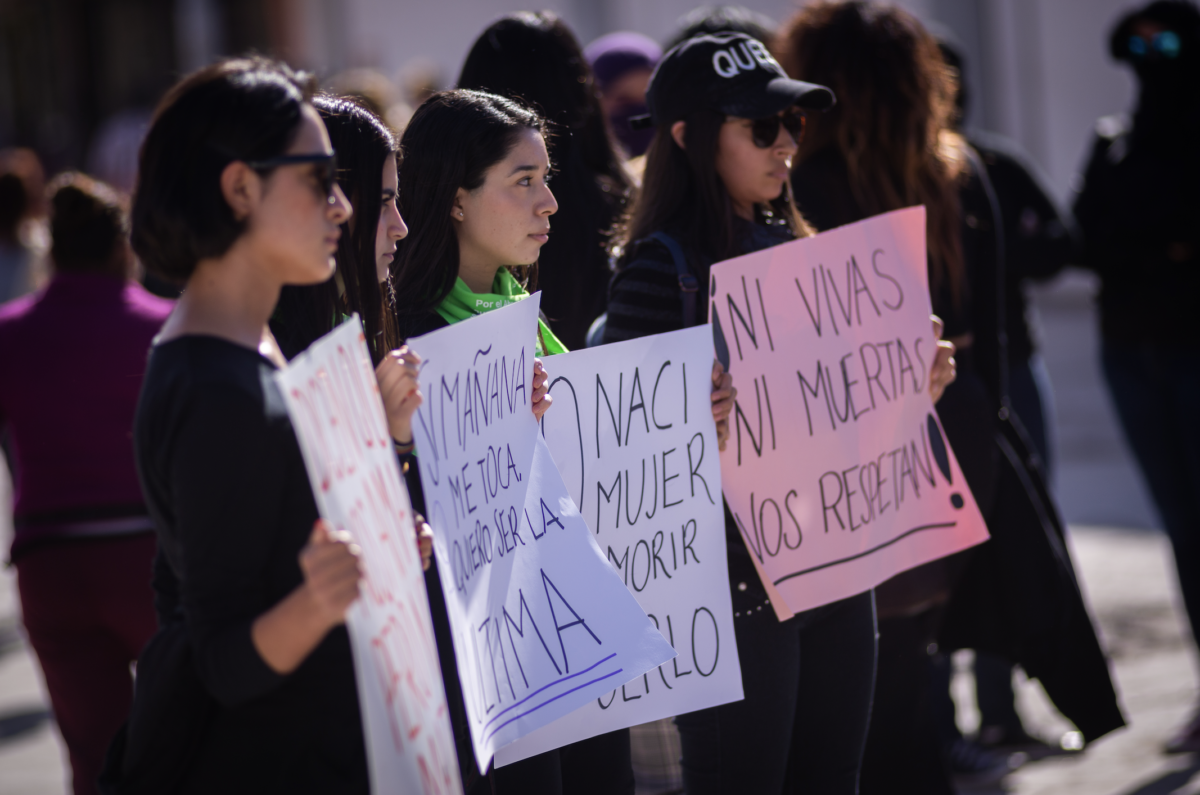
ELISA: Yeah, both of you bring up some great points. Why is it important for people to bring awareness to this issue? How can people bring awareness to this issue outside media formats?
ESTEFANIA: Well, the thing is that we are only a tool. The families have made the call to action, and all the people that have had empathy around these circumstances are the ones who are now activists and are the ones who are now feminists. For ministers, now, these feminist movements have been the ones who have pushed for awareness around it. Now, we were given the possibility and opportunity to have a platform —a podcast. It was a big podcast with a big platform with the budget to do it. I think that is where you have to be conscious that you now have a responsibility. Now at least for me, if not as a filmmaker, because I know a lot of filmmakers who have tried to address this same subject, and they do it so wrong and so terrible.
Now, but maybe one of the things that Craig and I have been fortunate to have is that I have social anthropology and ethnohistory background, and he has a journalist background. So we know that ethics are important. And we knew that approaching this subject, we needed to do it like that. With that in mind, the media can do a lot to get consciousness and get people the awareness and information to understand these things. I also think that it’s important to understand why these things are important. It’s because when you understand the entire complexity around all these murders and all these disappearances, and now, you understand it’s also globalization. And you understand it was capitalism in this neoliberal way that we experience it. This individuality makes you think that the way you consume things affects the lifetime and economy of other people.
For example, one of our podcast experts says that sex trafficking is the second most important business they have after drug dealing. And after, they transport these girls from quarters to Mexico City to Tijuana, and then to San Diego and then to San Francisco, and then the trace is lost. You begin to think, ‘OK, so who is consuming these services or sex services of these girls?’ and then you understand that it’s the U.S. and Canada. That is where you begin to understand that this is also your fault, and this is also your responsibility, and you have to be held accountable for that.
So the media, or at least this kind of platform, helps to understand what it’s behind. It’s not only that a girl was disappeared, or a girl was murdered. It’s all the things that are behind all the actions —then you get this shock to the reality, and you understand why it’s happening. You understand that maybe you are also part of the problem. And it doesn’t matter that you live in Japan. And that’s the other thing, this is not only a thing that happens in Juarez, but the girls are also disappearing in the U.S., the girls are disappearing in Indonesia, the girls are disappearing in Europe. I don’t know the characteristics of each culture and society. But it happens, and it happens all the time. The thing is that Mexico had, in this case, a very brave posture on this one, and they decided to open up what was going on. And they want to do something about it. So now it’s time for others to gain that consciousness in their own surroundings and their own contexts. Because it’s not only in Juarez, maybe it’s happening around the corner of your own home.
ELISA: What were some situations that made you concerned for the safety of yourself and the team?
CRAIG: Well, yeah, that shooting incident that happened while recording the podcast was unpleasant for everybody and frightening. Especially while it was happening, afterward, Alicia, who was doing all the podcast interviews, knew some of the journalists who were already on the scene, and they spoke with them. And they were able to figure out what was going on. Even though it was a scary situation, it didn’t directly relate to what we were doing. So that was good to hear. Because obviously, we wouldn’t have stayed if anybody’s safety was at risk.
I’m glad that we were able to include that in the podcast because I think it illustrates to a listener, especially somebody who is not as knowledgeable about the history of Ciudad Juarez or the femicides, that there’s a lot of danger lurking in that city, even at two in the afternoon in the center of downtown. Unfortunately, what we went through is unexceptional for journalists in this country. I mean, Alicia, who did all the interviews, we talked with her later, and she told us these stories that we tried to include in the podcast about the number of shootings she witnessed during the cartel war in the early 2000s. We were inside a building and got shot at, and that was scary, but compared to some of the things that she and other journalists in Juarez have gone through, don’t want to give me a medal for being in the wrong place at the wrong time, which is essentially what happened. Fortunately, everyone was OK, and it didn’t have anything to do with us. But on the Richter scale of journalistic violence, Mexico doesn’t rank very high.
ESTEFANIA: Mexico, yes, it has its own issues and journalism. We did have some concerns around safety with the crew because that wasn’t the only incident either. (The gunshots) was the only flashing incident and in a very Hollywood way of putting it. The truth is that the narco knew we were there. A lot of people knew we were there. Because with social media, everybody knew that we were interviewing people. Some people even shouted out as we were doing a shooting because we went with a camera and registered everything on video. So we followed him as he sold his chocolate popsicles and somebody shouted at us to leave him alone. And we were like, ‘What happened?’ And then we figured out that it was somebody from the narco sales that knew him. They were like trying to defend the interviewee because they thought we were exploiting his image for our own profit.
The thing is that you have to be smart. When you do these kinds of things, it’s not like this is hell, and you can’t do something. You have to be with people that know how to move in the city, and they tell you where, ‘OK, now it’s a good time to go. So go. Right now, you need to get there; just be over there. And don’t move. Let me handle this.’ That’s the reason why you have fixers, and that’s the reason why we had Alicia and other team members. And that’s the reason why the only flashing incident was that one.
We knew that we were on social media, from people from the city. And then we knew that some cars went towards us, and then they parked behind us. And they asked, ‘Where’s the school?’ but it’s not that question. They are asking, ‘What are you doing here?’ We already knew how to answer that kind of question and act around that kind of situation. It’s not that you are always in fear. We couldn’t do a show if we were in fear all the time. It’s just to accept that that’s the reality, and you have to adapt to the fact that you have and try to make it work the best way you can.
So yes, it’s always a thing about safety. It’s always a thing about, ‘OK, how are we going to tackle the production of today?’ But if you’re smart enough and listen to the people who know how to move inside the city —unless you go with a nuanced and another conscious way that you are going after somebody with name and surname, then things can get heavier. And you can do that.
That’s the reason why there’s a lot of very brave journalists here in Mexico who have done that. They have done a lot of great things for this country. And now there are exiled like Lydia Cacho. For example, the truth has to come out. We have to talk about these issues. So everybody is conscious of the concrete idea we live in, and we just put up with it. And we hope for the best. We always do the best that we can.
It’s more of the good people than the bad ones. That’s a reality also. So we move forward, and we try to make our world a better place, at least doing a podcast.
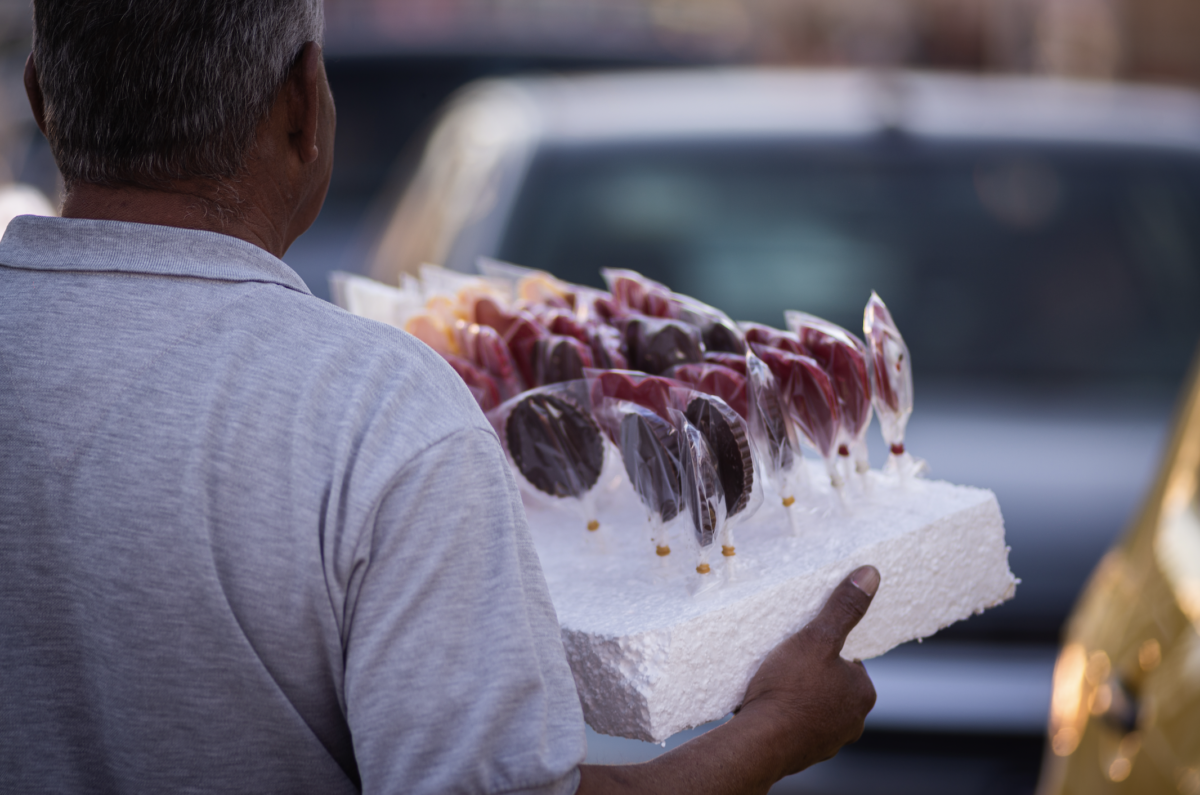
ELISA: Thank you for sharing. You talked a lot about the safety and the safety precautions you guys took as a team. What do those safety precautions look like for families or young women in Juarez today, or Latin countries in general?
ESTEFANIA: Well, you have to be conscious that what happens in Juarez is not the same thing as happens in Mexico state or Veracruz or Bogota. It’s not the same context, and it doesn’t move the same way. But today, the maquiladoras and the factories still have politics and actions that go against labor rights. Because that’s the first thing that we should address, maquiladoras and this kind of factory, they pay peanuts to their workers, so they have no labor rights over there. It’s kind of an exploitive context of work and labor. In this case, women are more disadvantaged than men because of gender and because of the history that we already have discussed. Maquiladoras in Mexico have been putting a lot of rules or protocols to do inside the work environments, more friendly to women because that’s the sense that it happens right now. But the truth is that in the practical ways right now, it’s not coherent. It does not fit the dynamics they had before putting those rules or those protocols into action. So there’s a lot of work to be done still, in these modern Juarez.
The truth is that, unfortunately, women are still killed and still disappeared. That’s a reality that we have to face. We will have to go through it. As a country, we are taking a lot of consciousness that it is a problem, a very, very big problem. We had the bravery to open this thing and say, ‘We do have a problem, and we need to address it.’ Now there’s a lot of mechanisms and loss being done to protect women towards violence. There’s a lot of work to be done still.
ELISA: So that was the end of my set of questions, and I’ll go ahead and kick it off to Dana for the second half.
If you’re interested in pursuing a media career, make sure to visit us at latinitasmagazine.org for more information. Thank you guys so much for tuning in to this episode of 20 Questions With. We’ll see you next time.
Thank you for tuning in to part one of this episode. Go ahead and continue listening for part two to hear Dana’s side of the interview.
Featured image courtesy of Hollywood Reporter.
Want to read more stories like this? Please give us your feedback here!
Latinitas Magazine is a department within Latinitas, a registered nonprofit. Readers like you fund us, so please consider donating today. Thank you!



